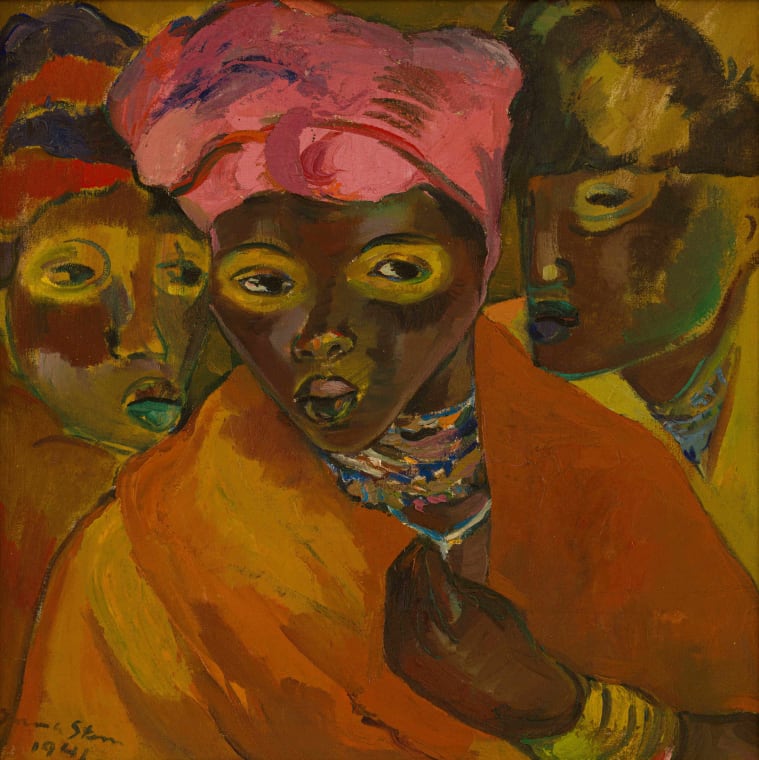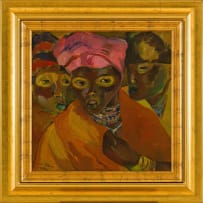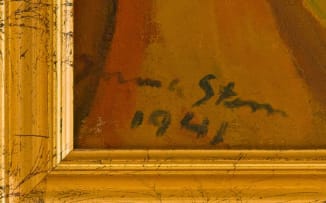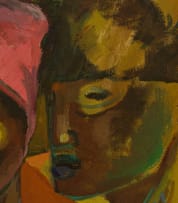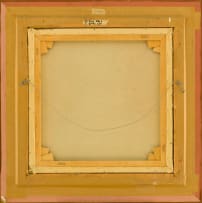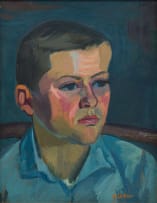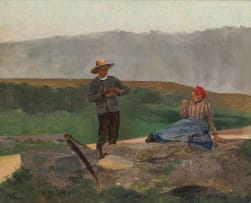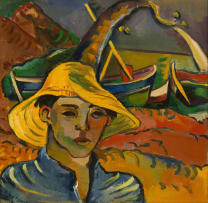Modern, Post-War and Contemporary Art
Live Virtual Auction, 17 - 18 May 2021
Modern, Post-War and Contemporary Art
About this Item
signed and dated 1941
Notes
This lot depicts an unknown cohort of women that Stern encountered on a 1941 trip to the Eastern Cape, then known as Pondoland. The work dates from a decade widely considered 'the most fruitful period of her career,' to quote Neville Dubow.1 Stern was 47 and in full command of her vocabulary. The earlier romantic expressionism that typified especially her figure studies of the 1920s had been updated by a more descriptive style of figure painting characterised by Stern's interest in melding factual report to a vibrant palette and vigorous paint technique. This change was largely underwritten by a number of ambitious painting trips that Stern undertook in the 1930s, notably to Madeira, Senegal and Zanzibar.
This work was produced a year before her first trip to the Belgian Congo. Perhaps due to it being bookended by her celebrated expeditionary trips to Congo and Zanzibar, Stern's 1941 journey to Pondoland barely registers in histories of the artist. This is a shame as Stern produced a number of assured oils. Aside from this lot, other notable works include Young Xhosa Woman, Portrait of a Woman in Lilac Turban and Initiation Dance, the latter a gregarious scene of mass assembly that now enjoys a prominent position in the newly refurbished Irma Stern Museum in Cape Town.
Stern first travelled to Pondoland in 1929, seven years after she inaugurated her long-term project to meet, observe and depict southern Africa's various indigenous inhabitants. Stern's biographer Karel Schoeman has characterised the artist's journeys of the 1920s as quests to depict 'her private vision of Africa'; it was a vision that melded 'memories, dreams and desires in uneven proportions'.2 This is not in dispute, but it bears noting throughout her travels, in Pondoland and elsewhere, Stern demonstrated considerable interest in the affairs and rituals of women. The artist frequently depicted women in pairs or larger groups. Oftentimes her subjects are shown either labouring or engaged in cultural rituals.
This tightly framed composition is more concerned with the external signs of identity than any particular action. Stern is attentive to the elaborate head wraps, face paint, beadwork and covering garments worn by especially amaMfengu (or Fingo) women. While her work possesses socio-cultural value in its depiction of traditional Xhosa customs, this at a time of growing political unhappiness in Pondoland, the work is not reducible to mere anthropological illustration. Stern is not comparable to Barbara Tyrrell, whose studies of Fingo women illustrated brochures of the newly inaugurated SA Tourist Corporation in the 1950s. Rather, the present lot is emblematic of how Stern translated a fragile encounter in the field into a colour-rich statement about the irrefutable place of women in a political society, South Africa, dominated by men.
1. Neville Dubow (1971) 'Irma Stern: An Evaluation', in Catalogue of the Collections of the Irma Stern Museum, Cape Town: University of Cape, page 6.
2. Karel Schoeman (1994) Irma Stern: The Early Years, 1894-1933, Cape Town: South African Library, page 74.
Provenance
Sotheby's/Stephan Welz & Co, Johannesburg, 4 November 1991, lot 317.
